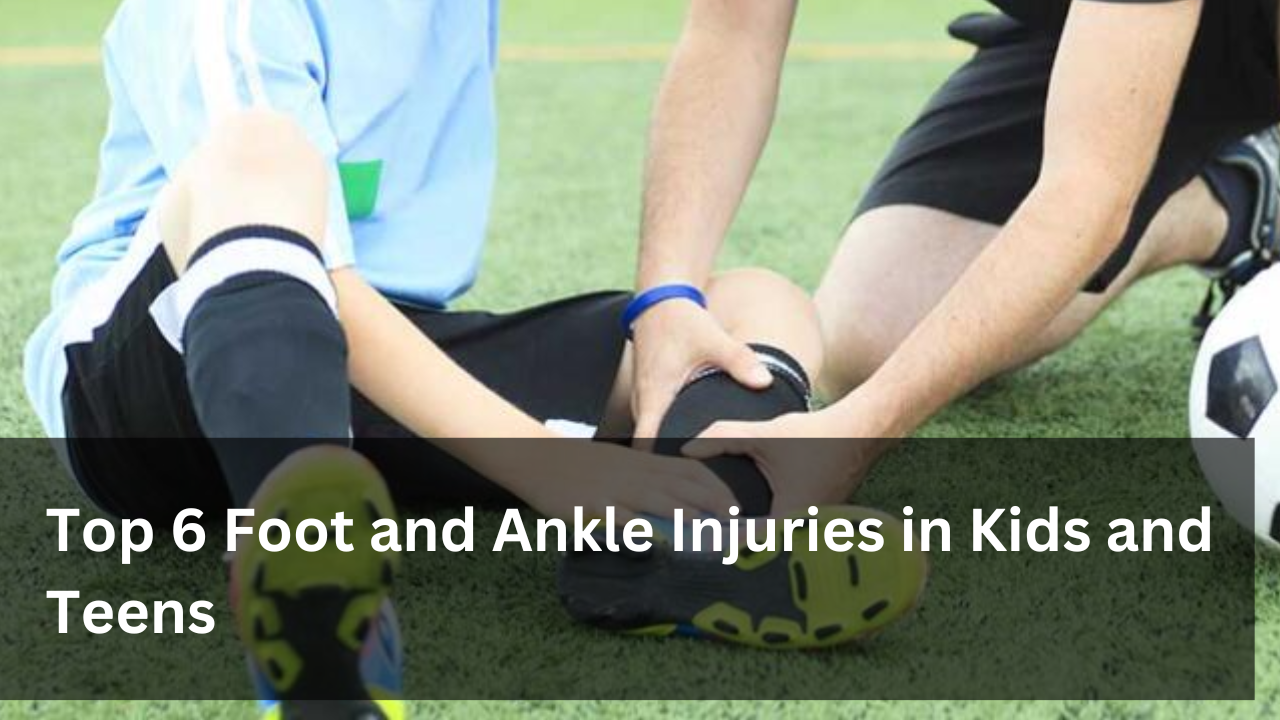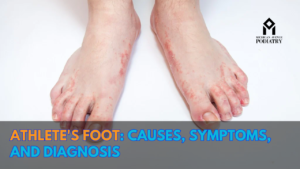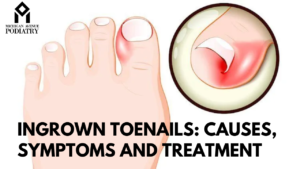Kids and teens are bundles of boundless energy. They run, jump, climb, and play with reckless abandon, pushing their bodies to the limit. This active lifestyle is fantastic for their overall health and development, but it also comes with an increased risk of injury. Foot and ankle injuries are especially common among young athletes and active children.
Here, we’ll explore the top 6 foot and ankle injuries in kids and teens, along with their causes, symptoms, and treatment options. By understanding these common problems, you can help your child stay active and prevent injuries, or recognize them early for a speedy recovery.
Why Are Foot and Ankle Injuries Common in Kids and Teens?
There are several reasons why children are more susceptible to foot and ankle injuries:
- Growing Bones: Children’s bones are still growing, and the growth plates, which are the areas where new bone tissue forms, are weaker than mature bone. This makes them more vulnerable to overuse injuries and stress fractures.
- Flexible Ligaments: Ligaments are the tough tissues that connect bones together. In children, these ligaments are more flexible, which can lead to sprains if the ankle twists or rolls too far.
- High Activity Levels: Kids and teens are often involved in sports and physical activities that put a lot of stress on their feet and ankles.
- Improper Footwear: Wearing shoes that don’t provide enough support or are the wrong size can contribute to foot and ankle problems.
Top 6 Foot and Ankle Injuries in Kids and Teens:
- Ankle Sprains: The most common foot and ankle injury in children and teens are ankle sprains. It occurs when the ligaments that support the ankle are stretched or torn due to a sudden twist or roll. Symptoms include pain, swelling, bruising, and difficulty walking.
- Foot and Ankle Fractures: These can happen from falls, direct blows to the foot or ankle, or overuse. Stress fractures, caused by repetitive stress on a bone, are more common in active children. Symptoms include pain, swelling, bruising, and difficulty bearing weight on the affected foot.
- Sever’s Disease: This painful condition affects the growth plate in the heel bone (calcaneus) in children between the ages of 8 and 14. It’s caused by repetitive stress on the heel from activities like running and jumping. Symptoms include pain and tenderness in the back of the heel, especially during activity.
- Plantar Fasciitis: This inflammation of the plantar fascia, a thick band of tissue that runs along the bottom of the foot, can occur in active older children and teenagers. It’s caused by repetitive stress on the plantar fascia, often from activities like running or jumping. Symptoms include pain in the heel, especially in the morning or after long periods of standing.
- Achilles Tendinitis: This inflammation of the Achilles tendon, which connects the calf muscle to the heel bone, can affect teenagers, especially those involved in sports that involve a lot of jumping. It’s caused by repetitive overuse of the tendon. Symptoms include pain and stiffness in the back of the heel, especially in the morning or after activity.
- Osgood-Schlatter Disease: This affects the growth plate at the top of the shinbone (tibia) in active children and teenagers, particularly those involved in sports like soccer or basketball. It’s caused by repetitive force on the growth plate from activities like kicking or jumping. Symptoms include pain and tenderness at the top of the shinbone, especially during activity.
Preventing Foot and Ankle Injuries in Kids and Teens:
- Proper Footwear: Ensure your child wears well-fitting shoes that provide adequate support for their activity level.
- Warm-up and Cool-down: Encourage proper warm-up exercises before and cool-down stretches after physical activity.
- Gradual Increase in Activity: Gradually increase the intensity and duration of physical activities to avoid overuse injuries.
- Maintain a Healthy Weight: Excess weight puts extra stress on the feet and ankles.
- Strength Training: Regularly incorporate strength training exercises to build strong muscles that support the joints.
- Listen to Your Body: Teach your child to recognize pain and stop activities if they experience discomfort.
When to See a Podiatrist or Foot Doctor:
If your child experiences persistent foot or ankle pain, swelling, difficulty walking, or any other concerning symptoms, it’s crucial to consult a podiatrist. Podiatrists are specialists trained to diagnose and treat foot and ankle conditions in all age groups.
Early diagnosis and treatment of foot and ankle injuries can significantly improve healing and prevent long-term complications. A podiatrist can develop a personalized treatment plan for your child, which may include:
RICE Therapy: Rest, Ice, Compression, Elevation – This is the first line of treatment for many acute foot and ankle injuries.
- Immobilization: In some cases, a cast, splint, or walking boot may be needed to immobilize the injured area and promote healing.
- Physical Therapy: Exercises can help improve strength, flexibility, and range of motion in the affected foot or ankle.
- Orthotics: Custom-molded shoe inserts can provide additional support and help correct biomechanical abnormalities that contribute to certain foot problems.
- Medication: Over-the-counter pain relievers like ibuprofen or acetaminophen can help manage pain and inflammation. In some cases, prescription medications may be necessary.
Conclusion:
Keeping kids and teens active is vital for their physical and mental well-being. By being aware of the common foot and ankle injuries that can occur, you can help your child stay active safely. Remember, proper footwear, gradual increases in activity levels, and good listening to your child’s body are all crucial for preventing injuries. If your child experiences persistent pain or any concerning symptoms, don’t hesitate to consult a podiatrist or foot doctor for a diagnosis and personalized treatment plan. With proper care and prevention, children and teens can enjoy a lifetime of healthy and active feet.
Additional Tips:
- Encourage your child to participate in age-appropriate activities designed for their skill level.
- Take breaks during long periods of standing or activity.
- Maintain a healthy diet to ensure proper bone and muscle development.
- Discuss proper stretching techniques with a coach or physical therapist to ensure your child performs stretches correctly.
By incorporating these tips and promoting healthy habits, you can help your child avoid injuries and keep their feet healthy and happy!



